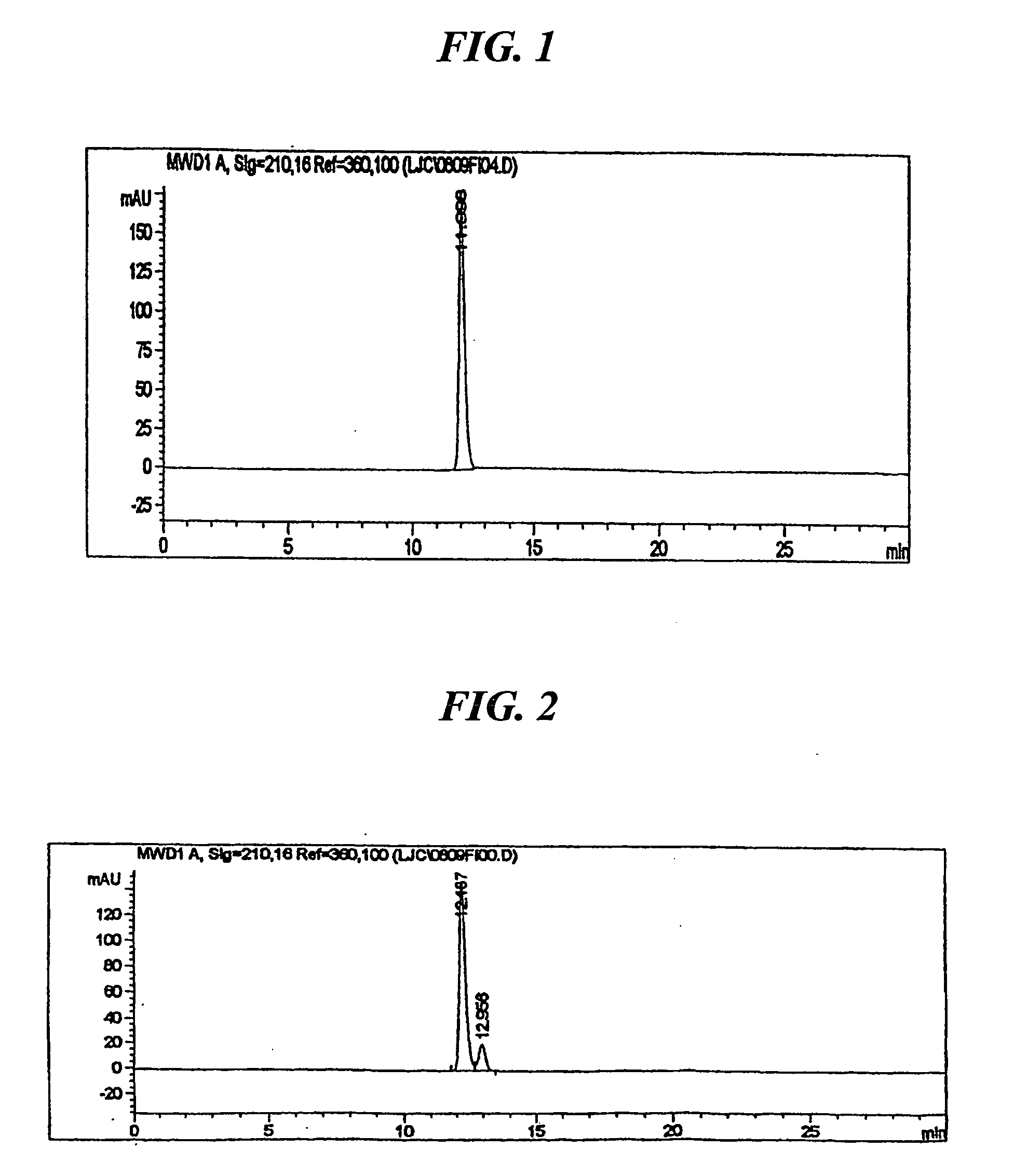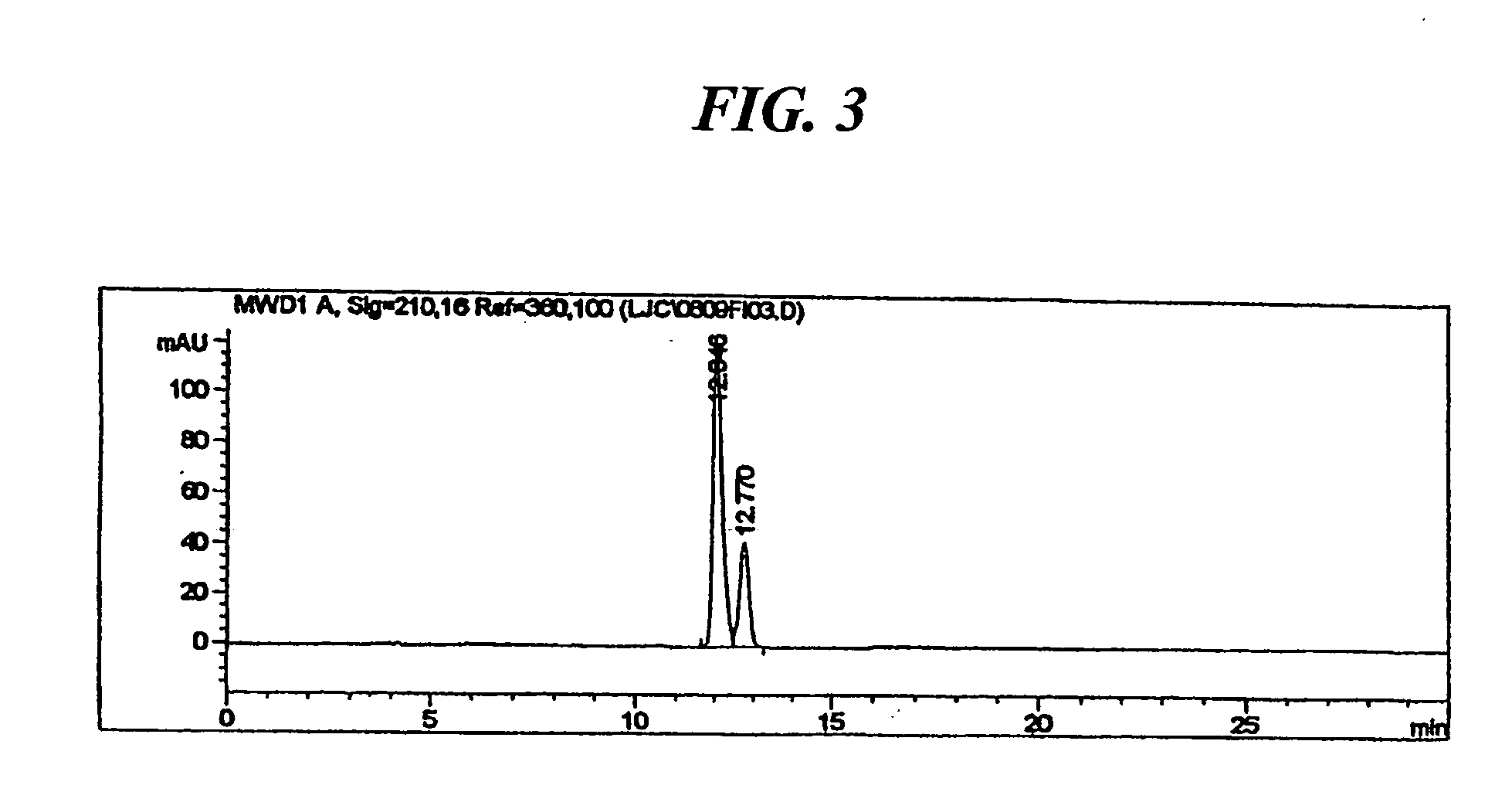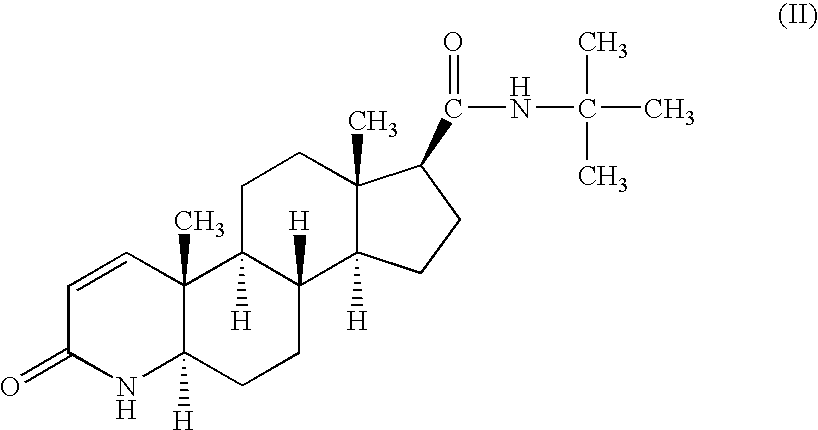Method for the selective preparation of 3-oxo-4-aza-5a androstane compound
a technology of androstane and selective preparation, applied in the field of selective preparation of 3oxo4aza5androstane compound, can solve the problems of poor productivity, asymmetric reduction process requires the use of explosive hydrogen and an expensive catalyst under high pressur
- Summary
- Abstract
- Description
- Claims
- Application Information
AI Technical Summary
Benefits of technology
Problems solved by technology
Method used
Image
Examples
example 1
3-oxo-4-aza-5α-androstane-17β-carboxylic acid (the Compound of Formula (I)-1)
[0027] 3.2 g (10 mmol) of 3-oxo-4-aza-5-androstene-17β-carboxylic acid obtained in Preparation 2 was dissolved in a mixture of 45 ml of formic acid and 15 ml of ethylene glycol, and 2.6 g (80 mmol) of activated zinc was added thereto. The mixture was reacted for 8 hours at 100 to 105° C. and cooled to room temperature. The suspended solid was removed by filteration, and the solvent in the filtrate was removed under a reduced pressure. 13 ml of N-methylformamide was added to the residue, and the resulting mixture was stirred for 30 minutes in an ice bath. Precipitates formed were then filtered and dried at 45° C., to obtain 2.6 g of the title compound (yield: 81%) as a white solid.
[0028] The product thus obtained was analyzed by HPLC and the result is shown in FIG. 1. As can be seen in FIG. 1, only the target 5α-compound (retention time: 11.996) is detected, the isomeric 5β-compound being not detectable.
[...
example 2
3-oxo-4-aza-5α-androstane-17β-carboxylic acid (the Compound of Formula (I)-2)
[0030] 3.2 g (10 mmol) of 3-oxo-4-aza-5-androstene-17β-carboxylic acid obtained in Preparation 2 was dissolved in a mixture of 16 ml of formic acid and 32 ml of ethylene glycol, and 2.6 g (80 mmol) of activated zinc was added thereto. The mixture was reacted for 8 hours at 110 to 120° C., and cooled to room temperature. The suspended solid was removed by filtration, formic acid was removed under a reduced pressure. The residue was dissolved in 300 ml of chloroform and washed successively with 150 ml portions of 5% aqueous sodium carbonate solution (×2) and 150 ml portions of water (×3). The chloroform layer was separated, then dried, filtered and the solvent was removed under a reduced pressure. 13 ml of N-methylformamide was added to the residue and stirred for 30 minutes in an ice bath. Precipitates formed were then filtered and dried at 45° C., to obtain 2.7 g of the title compound (yield: 83%) as a whi...
PUM
| Property | Measurement | Unit |
|---|---|---|
| Temperature | aaaaa | aaaaa |
| Time | aaaaa | aaaaa |
| Mass | aaaaa | aaaaa |
Abstract
Description
Claims
Application Information
 Login to View More
Login to View More - R&D
- Intellectual Property
- Life Sciences
- Materials
- Tech Scout
- Unparalleled Data Quality
- Higher Quality Content
- 60% Fewer Hallucinations
Browse by: Latest US Patents, China's latest patents, Technical Efficacy Thesaurus, Application Domain, Technology Topic, Popular Technical Reports.
© 2025 PatSnap. All rights reserved.Legal|Privacy policy|Modern Slavery Act Transparency Statement|Sitemap|About US| Contact US: help@patsnap.com



